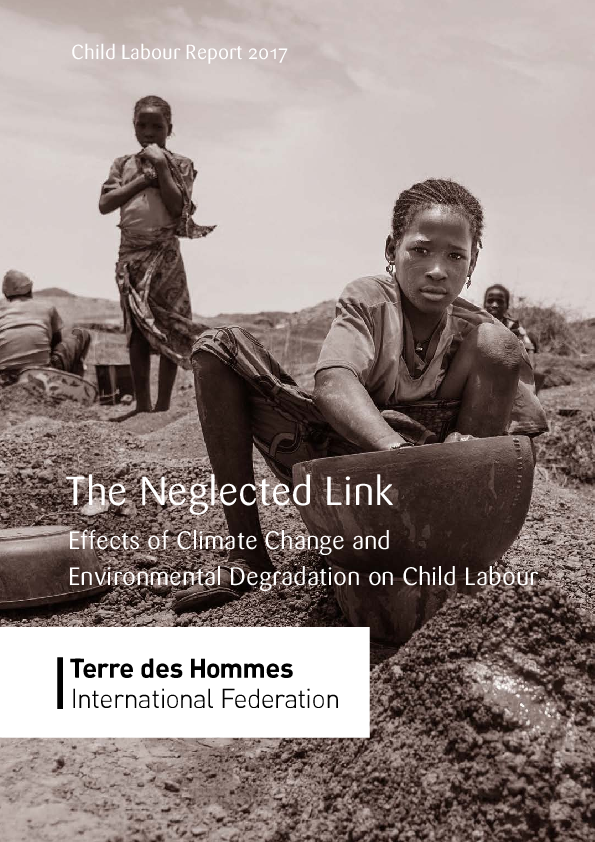
Reports, Study: Research
The Neglected Link: Effects of climate change and environmental degradation on child labour (Child labour report 2017)
Publication year:
2017
English
Format:
(3.5 MiB)
Publisher:
Terre des Hommes
The Child Labour Report 2017 argues that without a comprehensive and contextualised understanding of child labour, without a close view to newly emerging dynamics and phenomens, policies and programmes aimed at the abolition of its worst forms risk falling short of achieving their objectives. This study links child labour to environmental conditions, both as root causes of child labour or exacerbating factors of existing root causes and as a background to children’s working “environment”.
While many families, especially in rural areas, depend on the environment to earn a living, prevention and protection mechanisms in relation to child labour do not always consider the effect of environmental degradation on parents’ decision to send their children to work or to migrate in search of work. Furthermore, the exploitative nature of activities such as resource extraction orpoor agricultural practices is strongly mirrored in the hazardous conditions under which children are forced to work. On the other hand, findings suggest that engagement in certain types of work like recycling, if managed properly, can have positive outcomes for both the children involved and the environment.
By shedding light on these two areas of concern – child labour and the environment – Terre des Hommes hopes to inspire debate on the structural but often unnoticed factors that undermine the realization of children’s rights.
Read full abstract
Authors
View & Download
Document information
Publisher
Authors
Content type
Rights
© Author/Publisher
Found a mistake? Help us improve!
If you have noticed a document assigned to the wrong author or any other inaccuracies, let us know! Your feedback helps us keep our data accurate and useful for everyone.
Share
Link
